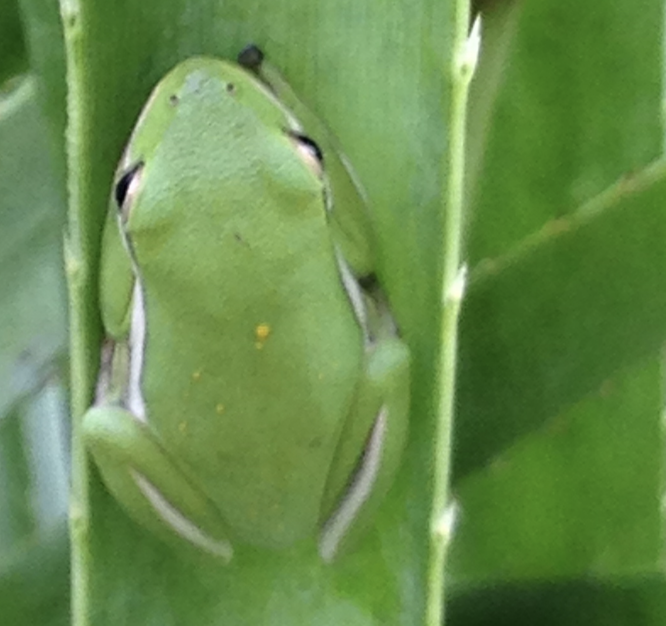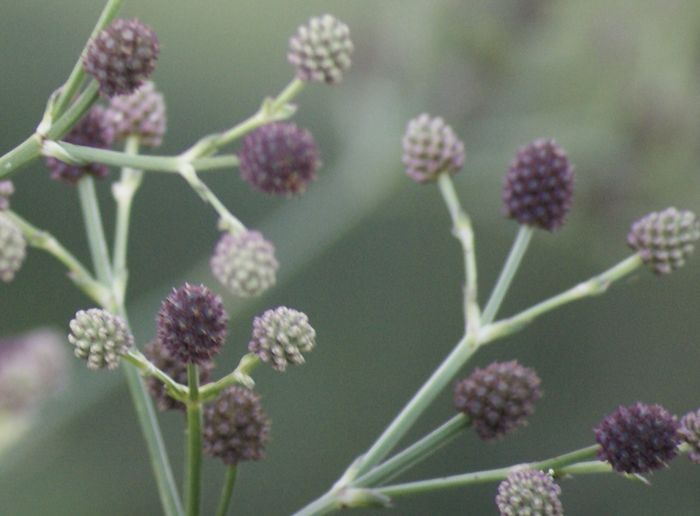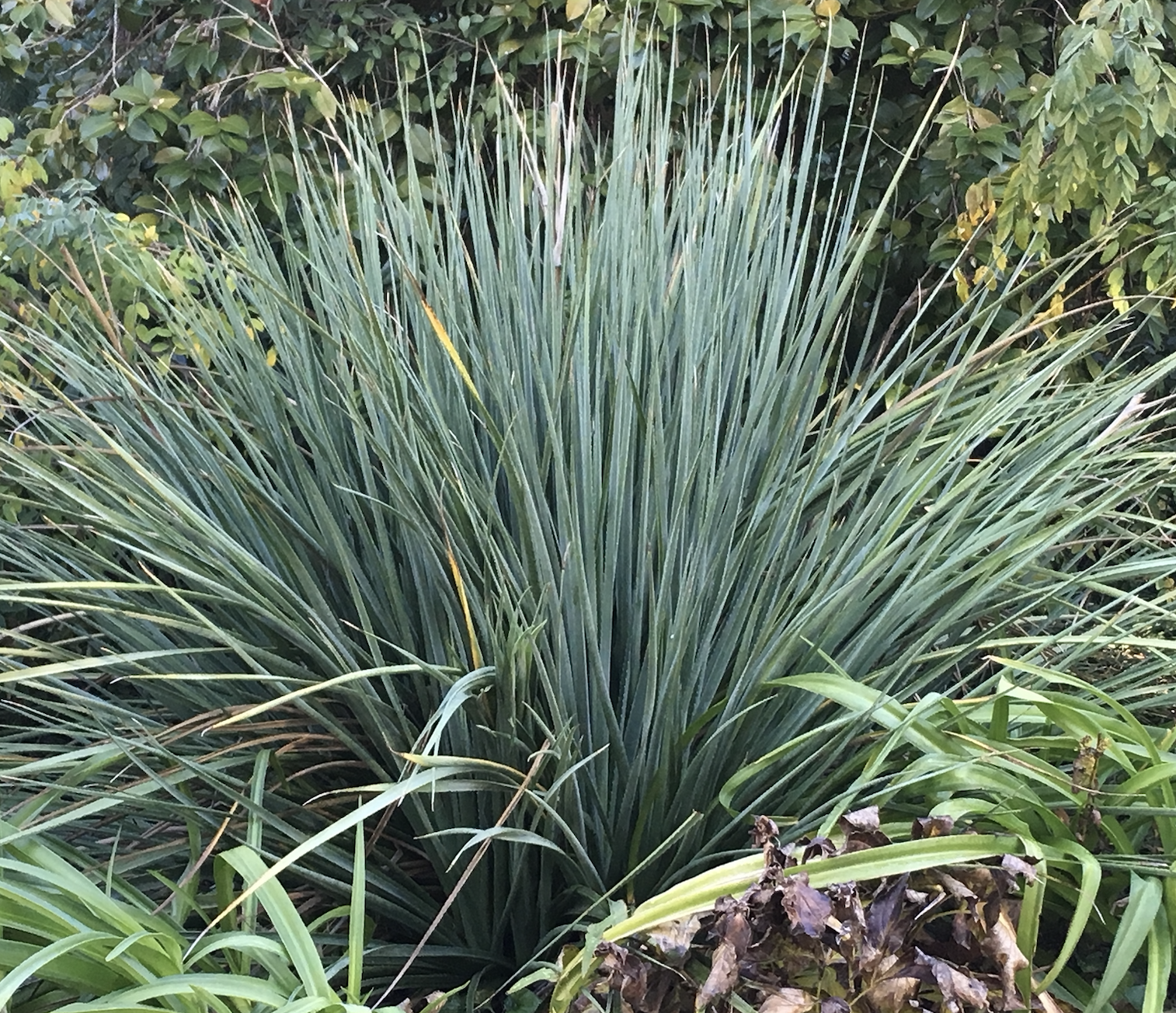
Eryngium pandanifolium Needs a Better Name & It Oughta Mention Tree Frogs
Like the best of “exclamation point” plants, giant eryngium adds evergreen structure to a garden. But like, drought-tolerant plants, the leaves look stiff and foreboding to some people. One garden client used to constantly tell me to leave my ‘pokey and prickly’ plants out of her designs! Some of those things can be hell to work around. Even dangerous.
But this plant fools us in lots of ways. First, it’s evergreen but it isn’t really green. It’s more olive. Or bluish. Second, the danger of its leaves is all show. They look like thin swords, but like an actor’s sword on stage, they bend and curl when you push against them. They look spiny but the tiny spines are fragile — if they do stick in your fingers, they fall right out. In fact, these yucca-looking leaves make a favorite home for our most tender bodies, sweet green tree frogs.
Our thin-skinned, friends cradle themselves, letting the slightly curled leaves wrap around their bodies like a blanket. Traditionally, the leaves are used to make cloth. Maybe that feels comforting; a bit of pressure like one of those weighted blankets people love these days.
Maybe they like the ride as 3 feet long bend and sway. Or maybe the fact that the leaves accumulate moisture from fog or mist refreshed the little frogs. It’s a perfect, protected, cozy, and moist spot.
Or it could be that here, the frogs get mid-air, perfect for catching flying insects.
In mid-summer, head-high flower scapes topped with hundreds of little button-shaped mauve flowers. At night, the little flowers release a fragrance to attract tiny flies and insects of all sorts including nocturnal moths.  Maybe that’s why tree frogs hunker down in the leaves in the day, to climb the flower stalks at night and to snack from the crowd of insects attracted to the purple cloud above. I love the form of the flowers. Pencil thin stems are strong as steel. They bend but never fall over. Branched a thousand times, those stems hold an airy bouquet of purple which tempts picking — they’re a perfect form for a tall vase. But be warned, overnight, the flowers release a strong fragrance making even a large room smell of wet dogs. Wet, dirty farm dogs.
Maybe that’s why tree frogs hunker down in the leaves in the day, to climb the flower stalks at night and to snack from the crowd of insects attracted to the purple cloud above. I love the form of the flowers. Pencil thin stems are strong as steel. They bend but never fall over. Branched a thousand times, those stems hold an airy bouquet of purple which tempts picking — they’re a perfect form for a tall vase. But be warned, overnight, the flowers release a strong fragrance making even a large room smell of wet dogs. Wet, dirty farm dogs.
But you grow it for the exclamation point! You grow it because it is tough as nails. Excellent in a dry sunny place. Perfect for a container that the hose doesn’t quite reach. I grow plants like this as contrast; the form and the olive green look awesome with soft, fluffy pastel perennials. An underplanting of creeping phlox is a killer combination.
This plant fools us in two final ways. Though it seems like a desert plant it’s actually more of a meadow plant, native to the open plains of Paraguay and river deltas through Argentina. There it tolerates seasonal flooding. Here too, it tolerates flooding and even saltwater. And finally, in the wild, mammals may try to dig up and eat the moist core but they don’t eat the leaves; deer do not either.
The common name of this plant makes little sense. Giant Sea Holly. It’s not giant, marine or holly. The Spanish name is a bit better; False Thistle. But if I were in charge of things like this, I’d go for the obvious, the romantic, and play on cute little tree frogs. I’d try to remove some of the conundrums surrounding this spectacular plant and call it Evergreen Tree Frog Grass. But for now, until I win that election the one that puts me in charge of changing silly things, I’ll just remember that nature is full of things that fool us. And that being fooled can be as delightful as being wrapped up in a cozy blanket with plenty of snacks nearby.
We offer this plant at various times during the year. Click here to see if they are available.

